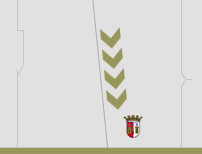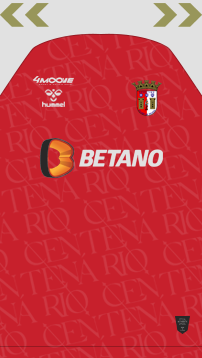- Cska Moscow 1920 Kitsempty Spaces The Blog -
- Cska Moscow 1920 Kitsempty Spaces The Blog Archive
- Cska Moscow 1920 Kitsempty Spaces The Blog Free
A photographic history of over 130 different CSKA Moscow shirts from 1990 right up to 2021. A part of the online history of football kit from Russia Premier League and all over the world.
Manuel Veth –
Espanyol vs CSKA Moscow – Thursday, December 12, 20:00 GMT/21:00 CET – Campo Nuevo Municipal de Llobregat, Barcelona – Spain
Espanyol vs CSKA Moscow will take place at the RCDE Stadium in Barcelona (Photo by Alex Caparros/Getty Images)- CSKA Moscow It was an outstanding season for CSKA, winning the double. This season will be even more impressive if they manage to do that again, however it will be a very tough ask, others such as Zenit and Anzhi are strengthening and if they wish to do well in the Champions League they will have to focus less on one competition which will most.
- It has never become clear which painting appeared in the groundbreaking 1874 exhibition, though more recently the Moscow picture has been favoured. Monet and Camille Doncieux had married just before the war (28 June 1870) and, after their excursion to London and Zaandam, they had moved to Argenteuil, in December 1871.
Espanyol vs CSKA Moscow – Players to Watch

Pol Lozano #26 – Espanyol
Alan Dzagoev #10 – CSKA Moscow
Espanyol vs CSKA Moscow – Match Stats
Futbolgrad Network Prediction: Espanyol vs CSKA Moscow: 1-0
Espanyol vs CSKA Moscow – Possible Lineups
Espanyol

CSKA Moscow
Andrew Flint is an English freelance football writer living in Tyumen, Western Siberia, with his wife and two daughters. He has featured on These Football Times, Russian Football News, Four Four Two and Sovetski Sport, mostly focusing on full-length articles about derbies, youth development and the game in Russia. Due to his love for FC Tyumen, he is particularly interested in lower league Russian football and is looking to establish himself in time for the 2018 World Cup. Follow Andrew on Twitter @AndrewMijFlint.
Cska Moscow 1920 Kitsempty Spaces The Blog -
Share this:
Cska Moscow 1920 Kitsempty Spaces The Blog Archive
Related
Features1699Gazeta921Cska Moscow 1920 Kitsempty Spaces The Blog Free
CSKA Moscow196Espanyol5Europa League262RECOMMENDED FOR YOU
Loading...Newer PostDynamo Kyiv look for important win against LuganoOlder PostAgainst Getafe, the weight of expectation lies on Krasnodar’s shouldersLeave a Reply
This site uses Akismet to reduce spam. Learn how your comment data is processed.FACEBOOK:Moscow has dozens of theatres. One of the most renowned is the Bolshoi Theatre, which was founded in 1825, though its present splendid building facing Theatre (formerly Sverdlov) Square dates from 1856. Also on Theatre Square is the Maly (Little) Theatre for drama. Another prestigious theatre, the Moscow Academic Art Theatre, founded as the Moscow Academic Theatre in 1898 by the actor, director, and producer Konstantin Stanislavsky and the playwright-producer Vladimir Nemirovich-Danchenko, was especially noted in its early days for its performances of the plays of Anton Chekhov. In the late 1980s the Moscow Academic Art Theatre split into two companies, one of which is named after Chekhov and the other after Maxim Gorky. Also of worldwide fame are the Obraztsov Puppet Theatre (formerly the State Central Puppet Theatre), and the Great Moscow State Circus, which in 1971 acquired new quarters on the Vorobyëvy Hills. The repertory companies of the theatrical groups tour frequently both in Russia and abroad. There are several concert halls, notably the Tchaikovsky Concert Hall and the two halls of the conservatory. Moscow’s orchestras have won international repute, as have a number of Moscow-based folk dance and choral ensembles.
Motion pictures are a popular form of entertainment in Moscow, and the city’s many cinemas are augmented by facilities for showing films in numerous clubs and cultural institutions. Several studios in the city produce motion pictures, notable among which is Mosfilm. Public interest in cinemas drastically diminished in the early 1990s, partly because of the increase of VCRs and partly because of the decline in domestic motion picture production. By the beginning of the 21st century, attendance at Moscow cinemas was again on the upswing, but it was still far less than it had been during the Soviet era. The majority of films shown are American movies. The television and radio broadcasting networks have headquarters in Moscow; programs produced there are usually received throughout the country.
The museums and art galleries in the capital include several of international rank. Foremost among these are the Pushkin Museum of Fine Arts, with a fine international collection, and the Tretyakov Gallery. The latter, which began in 1856 as the private collection of a connoisseur, Pavel Tretyakov, is noteworthy for its superb collection of icons, including several by Andrey Rublyov. Other notable museums are the Armoury Museum in the Kremlin and the State Historical Museum on Red Square. The Central Museum of the Great Patriotic War (World War II) is part of the sprawling memorial site at Poklonnaya Hill that opened in 1995.
Under the Soviets, many places of worship were closed, converted into museums, or destroyed. Moscow retained a number of functioning Russian Orthodox churches in addition to a few other Christian churches and Jewish and Muslim places of worship. Beginning in the late 1980s with the Soviet policy of glasnost and continuing with the Russian successor government in the early 1990s, religious repression gave way to policies endorsing religious freedom, and houses of worship in Moscow underwent massive and pervasive renovation and returned to use. The Russian Orthodox patriarch has a residence in Moscow. New churches have been built, as well as new mosques and synagogues.
The Luzhniki Park complex is the leading Moscow facility for sports and was one of the main arenas for the 1980 Olympic Games. The Luzhniki Stadium is flanked by a smaller arena, a natatorium, and the indoor Sports Palace. There are many stadiums and swimming pools in the area, including some heated open-air pools that are in use year round. In addition, there are a large number of football (soccer) fields, gymnasiums, and volleyball and basketball courts; most of these are attached to individual places of work or to sports clubs. Moscow has several first-division football teams that now have corporate sponsors but whose origins date from the 1920s, when they were affiliated with powerful institutions of communist society: Dynamo (tied to the KGB), CSKA (the army’s team), Lokomotiv (representing railway workers), and the defiantly independent Spartak (once only loosely linked to a food producers cooperative but now controlled by Lukoil, a Russian oil giant).
Outside the Garden Ring, Moscow is well endowed with parks and open spaces. GorkyCentral Park of Culture along the right bank of the Moscow River is the closest to the centre and, with its amusement park, is very popular. A large green area, covering nearly 3,000 acres (1,200 hectares), is Izmaylovsky Park on the east side. To the northeast is the more formal Sokolniki Park, which leads to an extensive tract of forest called Losinyi Ostrov (“Moose Island”). North of the city centre are the Botanical Gardens of the Academy of Sciences, one of several such gardens in the city, and the grounds of the Moscow K.A. Timiryazev Agricultural Academy. Bittsevsky Park, also of considerable size, has been established adjacent to the Ring Road south of the city centre. The Moscow Zoo, one of the world’s leading zoos, is a popular attraction west of the city centre. The Khimki Reservoir, just northwest of Moscow, is used for boating and aquatic sports, but even more popular are the other reservoirs to the north, just outside Greater Moscow. The surrounding forest-park zone provides extensive space for recreation.
